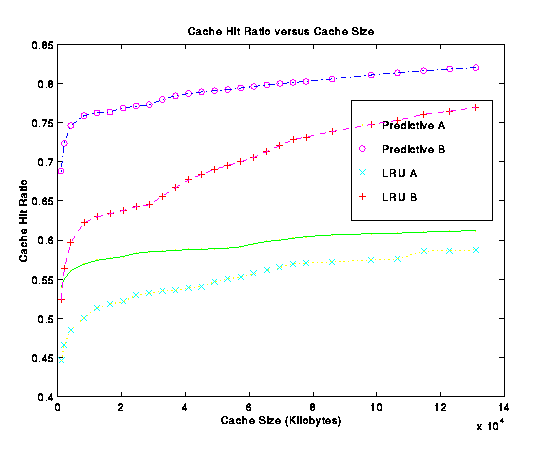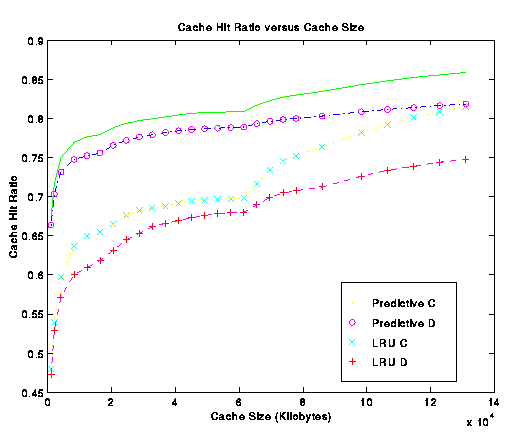

The simple model is that there is a cache of disk blocks. Any read-requested block from the disk is first searched for in the block cache. Only if not found in the block cache must the request go to the disk. This block cache takes RAM from the system, and reduced the amount of space used for the VM subsystem.
Any block that is to be written is instead stored in the block cache, and is only written if
A more complex caching scheme might have seperate caches for disk blocks, inodes, and directory entries. Maintaining a size balance between these three can be troublesome.
File caches can have very high hit rates for modest cache size.

